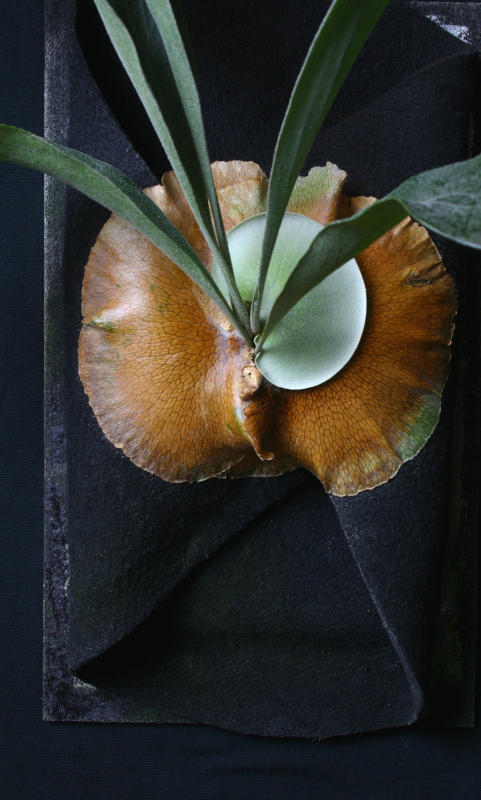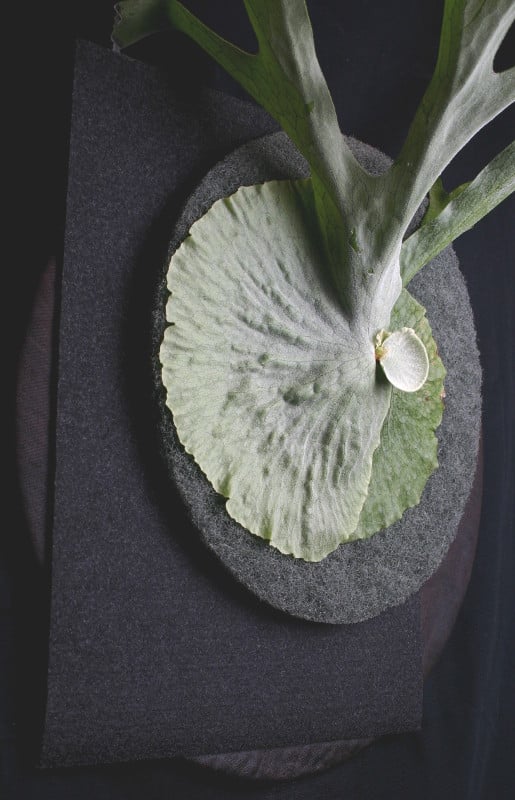
Growing on Polyester
I grow staghorn ferns on mounts made of synthetic materials. This makes for a permanent mount. The nature of the polyester felt used in these mounts is very appealing to the roots of the staghorns. They grow all through the mount so that the mount is the medium.
Growing on synthetic fabric has several effects worth mentioning. One is that these mounts are free draining. In the upright mounted position, water will run out the bottom until surface tension takes over. These mounts may drain for quite a while. The fabric is very porous on a micro scale, so it can hold a lot of water. Which suits the needs of the staghorn. Like in nature, but better.
Staghorns are epiphytes - meaning they find a place to live up in the crotch of a tree. Living up in a tree a staghorn must try to catch the rain and hopefully hang on to some of it in a wad of leaves and litter. It uses it's basal fronds to wrap up that precious root space and conserve the moisture it holds. That is all the moisture it will have until the next rain. Each year it may have to survive through seasonal dry periods.

